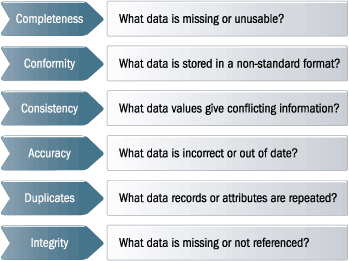Many forms of debt can make a company go bankrupt that do not show up on the balance sheet due to accounting rules. But the law requires the payments to be disclosed in the Form 10-K filing. A 10-K is plain in appearance and uses simple words but is more detailed since the disclosure of certain information is required by law. The company also may or may not include quarterly earnings data for the last two years in this section, depending on whether there have been material changes to the earnings. Unlike the 10-K filed annually, other forms serve related purposes, but have different schedules.

Requires the company to explain certain comments it has received from the SEC staff on previously filed reports that have not been resolved after an extended period of time. Check here to see whether the SEC has raised any questions about the company’s statements that have not been resolved. Two of the most important of these documents are the annual report and the Form 10-K.
What does a 10K report contain?
We follow strict ethical journalism practices, which includes presenting unbiased information and citing reliable, attributed resources. The information in a 10-K can aid an investor who is researching the company to see whether to buy that company’s https://accounting-services.net/direct-labor-rate-variance/ stock. It is always a good idea to complement reading of the 10-K by following news developments related to the company to provide context to the numbers and company performance. As mentioned earlier, GAAP accounting is not followed by all companies.
Suddenly, the company makes national headline news, because thousands of models are breaking down beyond repair. In the Form 10-K filing, a company must disclose its warranty policies and estimated warranty costs for products it sells or manufactures. There are many important parts of the Form 10-K that provide vital information to investors.
K Form
Backing up this material are notes, explaining the accounting methodology, and the Auditor’s Report—a statement from the outside accounting firm that reviews the documents, and attests to their accuracy. A 10-K report is a detailed report that all publicly traded companies are required to file with the Securities and Exchange Commission (SEC). The information you can find in a 10-K report includes the company’s history, its structure, financial statements, and its equity.
Securities and Exchange Commission (SEC), that gives a comprehensive summary of a company’s financial performance. The 10-K includes information such as company history, organizational structure, executive compensation, equity, subsidiaries, and audited financial statements, among other information. 10-K financial definition of 10-K While 10K reports are due annually and must include audited financial statements, 10Q reports are due quarterly, three times a year, and include unaudited financial statements. 10Q filings provide shareholders and the public an on-going update on a company’s performance over the year.
What is the Difference Between 10-K and Annual Report?
The proxy statement, which also includes information on corporate elections, is generally filed a month or two after the 10-K. Includes information about the company’s disclosure controls and procedures and its internal control over financial reporting. Here, management discusses the operations of the company in detail by usually comparing the current period versus prior period. These comparisons provide a reader an overview of the operational issues of what causes such increases or decreases in the business. To find a particular company’s Form 10-K filings, use the Company Search for the SEC’s EDGAR database.
- These letters are a way for the government to prosecute executives who knowingly falsify their Form 10-K or other required disclosures.
- Companies with more than $10 million in assets and a class of equity securities that is held by more than 2000 owners must file annual and other periodic reports, regardless of whether the securities are publicly or privately traded.
- The information included in a 10-K can be difficult to move through, but the more familiar investors become with the layout and the type of information included, it will likely become easier to identify the most important details.
- The deadline for filing a 10-K is between 60 and 90 days after the end of the company’s fiscal year, depending on the size of the company.
These letters became a requirement after several high-profile cases involving accounting fraud following the dot-com bust. The government requires companies to publish 10-K forms so investors have fundamental information about companies so they can make informed investment decisions. This form gives a clearer picture of everything a company does and what kinds of risks it faces. Large accelerated and accelerated filers must file their 10-Q 40 days after quarter end. Contrary to popular belief, public companies aren’t the only ones who have to submit a 10K. Private businesses with over $10 million in assets held by 2000 or more people must also submit a 10k to the SEC.
While accounting statements that adhere to Generally Acceptable Accounting Principles (GAAP) are common in the U.S., they are not necessary. In addition to a 10-K, companies are also required to publish a 10-Q and 8-K report. This section lays out the significant properties, physical assets, of the company. This only includes physical types of property, not intellectual or intangible property. The name of the Form 10-K comes from the Code of Federal Regulations (CFR) designation of the form pursuant to sections 13 and 15(d) of the Securities Exchange Act of 1934 as amended. Both documents are important when analyzing a company, although the 10-K is usually preferred by analysts, given its more comprehensive nature.

Investors use Form-10k to understand a company’s viability, and whether an investment in this organization will be a safe one that aligns with their values while yielding returns. Competitors will refer to the 10-K to see how their business is measuring up and look for clues about their competitors’ next move. Currently, the Sarbanes Oxley Act requires the SEC to review every public company’s financial statements at least once every three years, but some companies may be reviewed more frequently. When the SEC reviews 10Ks, and 10Qs for that matter, they look at them with an eye for inconsistencies, deficiencies, or lack of clarity.
